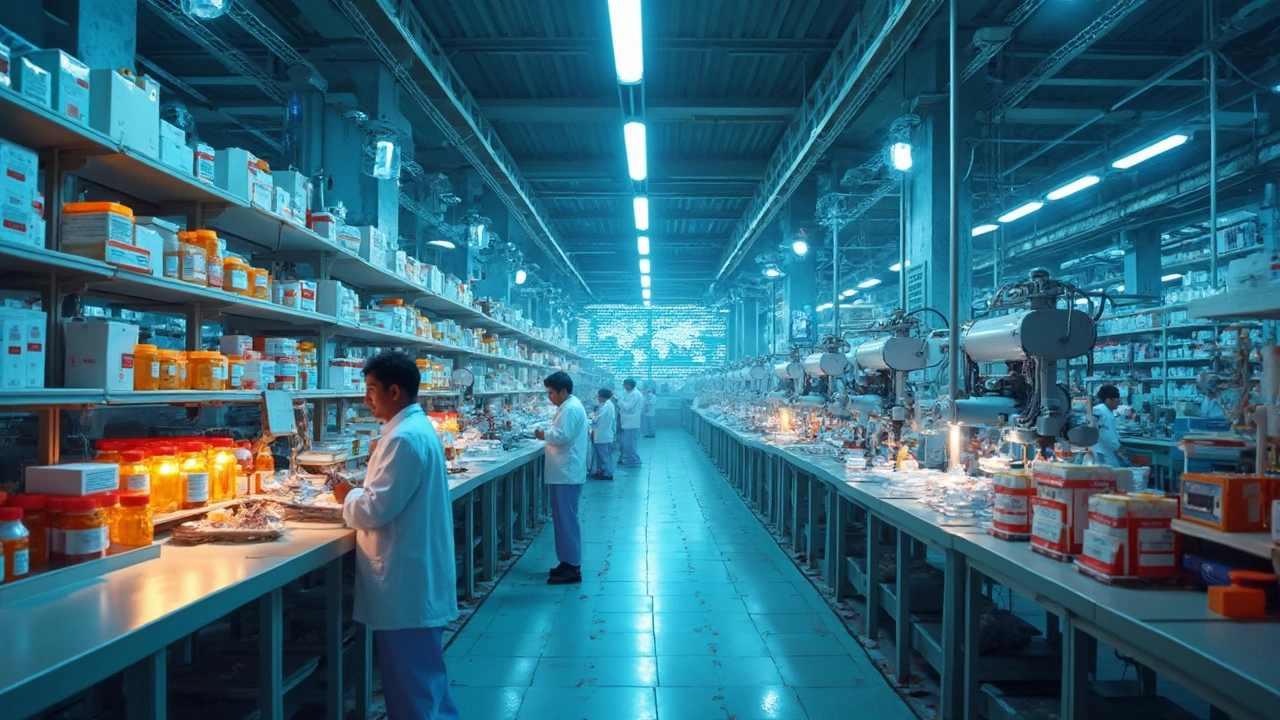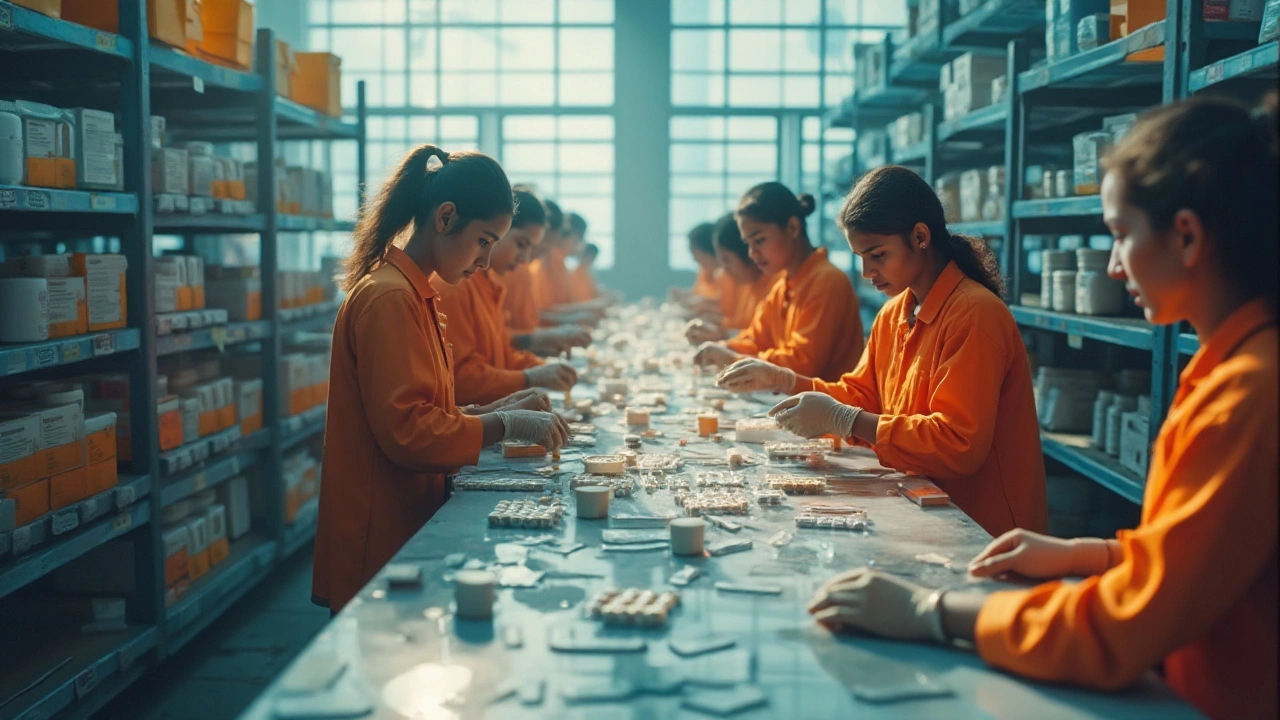Pharma Manufacturing: Trends, Challenges and Opportunities
When you hear Pharma Manufacturing, the large‑scale production of medicines, from active ingredients to finished dosage forms. Also known as pharmaceutical manufacturing, it sits at the heart of the pharmaceutical industry, a network of companies that discover, develop, produce and market drugs worldwide. The sector thrives on drug R&D, research and development activities that create new molecular entities and improve existing therapies, and it obeys strict regulatory compliance, the set of rules from bodies like CDSCO that ensure safety, efficacy and quality. In India, the Indian pharma market, one of the fastest‑growing drug markets, fuels demand for efficient manufacturing and robust quality systems. This mix of science, policy and economics creates a dynamic arena that we’ll unpack below.
First off, pharma manufacturing isn’t a single activity; it’s a chain that includes raw material sourcing, bulk synthesis, formulation, packaging and distribution. Each link requires specialized equipment, skilled personnel and tight process control. The chain’s efficiency directly impacts product cost, time‑to‑market and patient access. For instance, adopting continuous manufacturing can cut batch times by up to 50%, while also lowering waste. Meanwhile, advanced analytics and real‑time monitoring improve batch consistency, which regulators increasingly reward with faster approvals. So the sector constantly balances innovation with compliance, seeking ways to speed up production without compromising safety.
Why the Indian Landscape Makes a Difference
India’s pharma manufacturing advantage stems from three core factors: cost‑effective labor, a strong generic drug pipeline, and supportive government policies such as the Production‑Linked Incentive (PLI) scheme. These elements attract foreign investment and encourage local players to expand capacity. The country also benefits from a large pool of chemistry and engineering graduates, which fuels talent pipelines for both R&D and plant operations. As a result, Indian manufacturers can produce high‑quality generics at a fraction of the price seen in Western markets, positioning the nation as a key supplier to over 150 countries.
But the upside comes with challenges. Regulatory scrutiny has tightened, especially after recent inspections that highlighted gaps in data integrity and facility hygiene. Companies now invest heavily in Good Manufacturing Practice (GMP) upgrades, validation protocols and digital documentation. In addition, supply‑chain disruptions—like raw material shortages from China—push firms to diversify sourcing and explore local API (active pharmaceutical ingredient) production. Navigating these hurdles demands a proactive approach to quality management and strategic planning.
Another crucial piece of the puzzle is the rise of biologics and specialty medicines. These products require aseptic processing, cold‑chain logistics and often single‑use technology, which differ markedly from traditional small‑molecule drug lines. Manufacturers that can blend conventional chemistry expertise with biotech capabilities stand to capture a growing share of the market. In fact, forecasts suggest biologics will account for more than 30% of global pharma sales by 2027, and India is gearing up with dedicated biotech parks to meet that demand.
Technology adoption is reshaping every stage of pharma manufacturing. Robotics handle repetitive tasks like tablet counting, while AI predicts equipment failures before they happen. Cloud‑based Manufacturing Execution Systems (MES) provide end‑to‑end visibility, allowing managers to tweak parameters in real time. These tools not only improve productivity but also generate data that satisfies regulators seeking evidence of controlled processes. In short, digital transformation is no longer optional—it’s a competitive necessity.
Looking ahead, three trends will dominate the conversation: sustainability, personalized medicine and cross‑border collaboration. Sustainable manufacturing focuses on reducing energy use, waste and water consumption, often through green chemistry routes. Personalized medicine pushes factories toward flexible, small‑batch production that can quickly switch between formulations. Finally, collaborations between Indian firms and global innovators accelerate technology transfer and open new markets. Together, these forces will dictate how pharma manufacturing evolves over the next decade.
Below you’ll find a curated set of articles that dive deeper into each of these topics—from market rankings and cost breakdowns to case studies of leading companies. Whether you’re a startup founder, an investor, or a seasoned plant manager, the collection offers practical insights you can act on right away.

